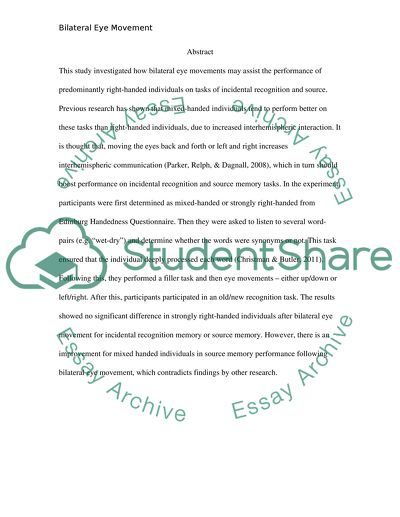Cite this document
(“Bilateral Eye Movement Effect on Incidental Recognition and Source Essay”, n.d.)
Retrieved from https://studentshare.org/psychology/1394024-bilateral-eye-movement-effect-on-incidental-recognition-and-source-memory
Retrieved from https://studentshare.org/psychology/1394024-bilateral-eye-movement-effect-on-incidental-recognition-and-source-memory
(Bilateral Eye Movement Effect on Incidental Recognition and Source Essay)
https://studentshare.org/psychology/1394024-bilateral-eye-movement-effect-on-incidental-recognition-and-source-memory.
https://studentshare.org/psychology/1394024-bilateral-eye-movement-effect-on-incidental-recognition-and-source-memory.
“Bilateral Eye Movement Effect on Incidental Recognition and Source Essay”, n.d. https://studentshare.org/psychology/1394024-bilateral-eye-movement-effect-on-incidental-recognition-and-source-memory.


